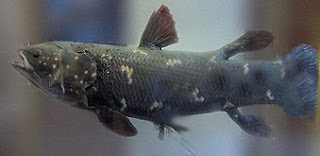Blogging on different aspects of human life for a better living on earth.
Friday, 7 October 2016
FISH(FOOD OF ANIMAL ORIGIN) DETERIORATION & THE PRESERVATION PRINCIPLES
FISH DETERIORATION
Fish tissue is more perishable than animal tissue. This is because the proportion of connective tissue proteins in fish is 3-5% lower than that of meat and 8-10% lower than that of stockfish.
Also, the denaturation temperature of fish connective tissue collagen is much lower than the corresponding beef protein.
The fish myosins also denature much more rapidly than beef or chicken myosins kept under the same conditions.
Besides, fish struggles when caught and use up virtually all the muscle glycogen. Consequently, the lactic acid content of the muscles necessary to exert preservative action becomes depleted.
As soon as fish dies, it begins to deteriorate.
Fish flesh contains between 0.2-2.0% of trimethylamine oxide (TMAO). This compound is an odour precursor and is broken down by spoilage bacteria after death to trimethylamine (TMA), dimethylamine (DMA) and monomethylamine (MMA). TMA is the main contributor to the smell of stale fish.
Four main factors are responsible for fish spoilage. These factors are:
1. Autolysis:
Autolysis usually precedes bacterial spoilage and involves the breakdown of protein and lipids to amino acids and fat by muscle enzymes.
The amino acids produced are used by microbes for proliferation.
2. Activity of micro-organisms:
This is the chief cause of decomposition of fresh unprocessed fish muscle.
While the flesh of healthy live fish is generally sterile, large numbers of bacteria are harboured in the surface slime and digestive tracts of living fish.
When the fish is killed, these bacteria attack the constituents of the tissues and grow relatively rapidly, resulting in the production of off-flavours and odours such as TMA.
3. Chemical deterioration:
The fats of fish are highly unsaturated and become easily oxidized. This results in rancid off-odours and flavours.
Furthermore, the fats of fish contain phospholipids rich in trimethylamine oxide.
TMA is split from the phospholipids by bacteria and natural fish enzymes to produce a strong fishy odour.
4. Attack by insects:
Flesh flies, blow flies and various beetles attack fish and cause considerable deterioration.
Troublesome scavengers such as mice, rats, hawks, cats, owls, dogs and crows eat up fish and obnoxious vermins like bugs, fleas, lice etc. Feed on fish flesh and contaminate it with bacteria, resulting in a rapid deterioration in the quality of the fish.
THE PRESERVATION PRINCIPLES
As soon as fish dies, it begins to deteriorate. This natural process is irreversible and the preservation principle is to slow down the deterioration, and increase the overall quality and storage life of the fish.
The general principles involved in the preservation include:
1. Scrupulous cleaning and hygiene in handling the fish caught.
2. Rapid and effective processing by:
a). Reducing the moisture content by drying, salting and smoking.
b). Lowering the temperature by rapid freezing to at least -10°c in not more than two hours.
c). Glazing to prevent drying.
3. Good packaging, storage and transport practices: Storage of frozen fish at -18 to -22°c is adequate to preserve the quality for up to 18 months.
REFERENCES
Fox, B. A. and Cameron, A. G. (1989). Food Science, Nutrition and Health. 5th ed. Edward Arnold; A division of Hodder & Stoughton, London.
Ihekoronye, A. I. and Ngoddy, P. O. (1985). Integrated Food Science and Technology for the Tropics. Macmillan Publishers, London.
Subscribe to:
Post Comments (Atom)


No comments:
Post a Comment